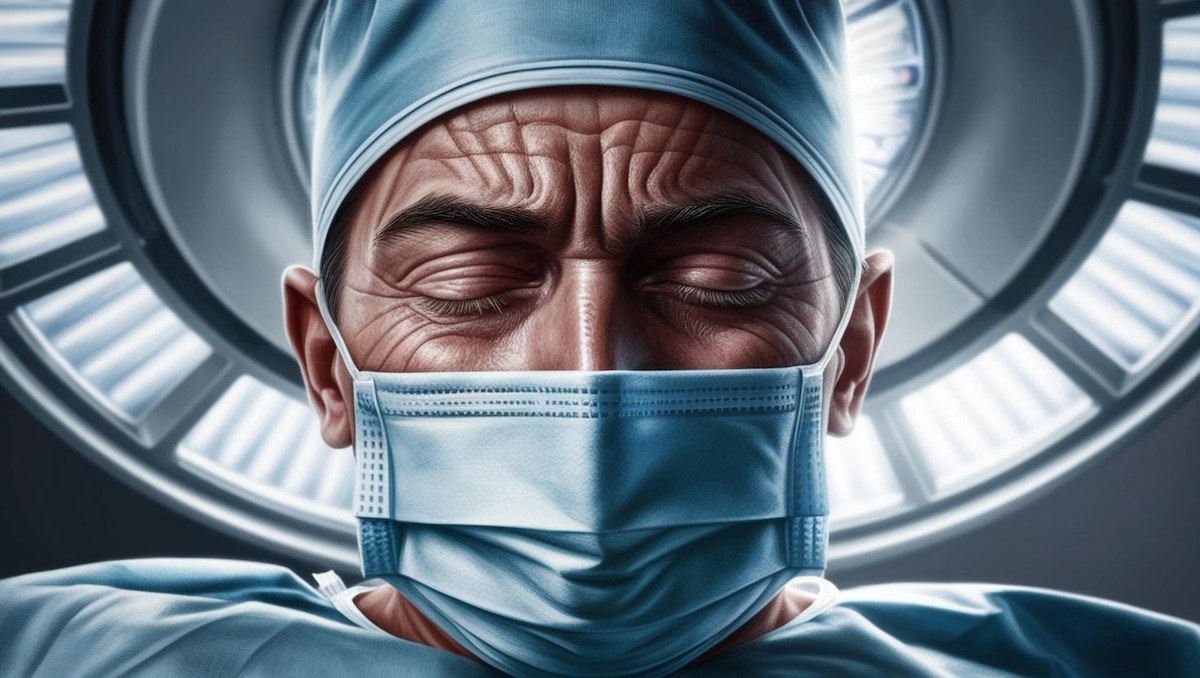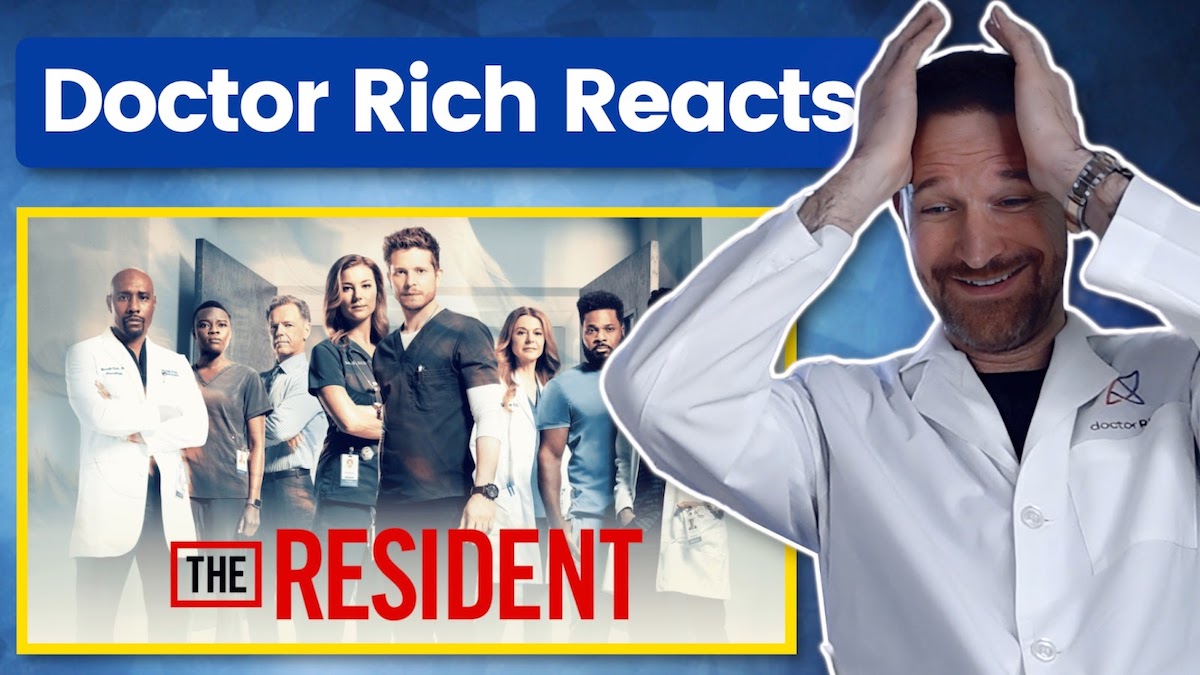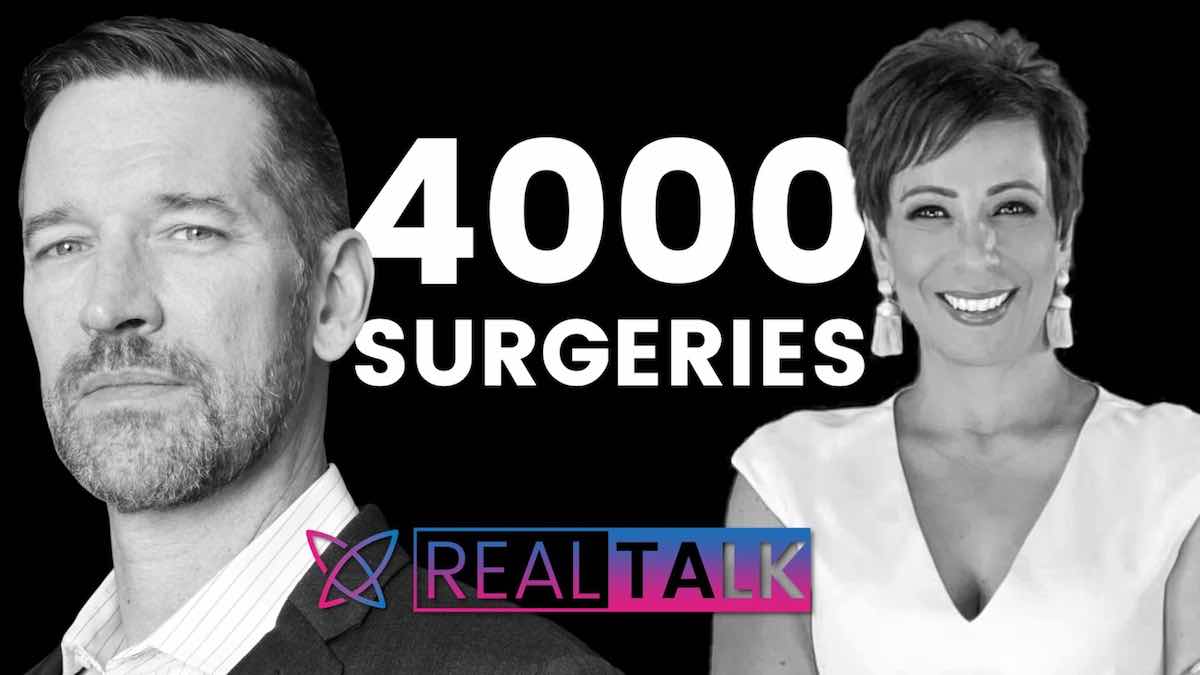Doctor Rich:
Today, we’re in for a treat. We have the honor and privilege of being joined by Hank Hernandez. Hank is a retired Lieutenant Colonel in the US Army. He started his career as a clinical nurse, had specialty training at Baylor, and became the CEO of two of the largest hospitals in El Paso — in two of the largest hospital systems in the country! Hank has unique insights into what it takes to become one of the greatest epicenter programs in the country. And he’s here to have a candid conversation about health and women’s health in the Borderlands.
Don’t have time to read this post? Watch the video here instead!
Hank:
Dr. Rich and I met… gosh, about 20 years ago. I was leading one of the larger hospitals in El Paso. Doctor Rich was an individual that I was looking to recruit to build a robotic program. While I have some clinical expertise, I’m surely not a surgeon. When I looked at the credentials that Doctor Rich had… he was the guy that I knew that we could build a superior robotic program around. And we met a lot of odds along the way — both administrative and clinical. But quite frankly, it was a great experience, and it’s something that I would love to do all over again.
Doctor Rich:
I think that from very early on in my recruitment (after coming back to El Paso — I had grown up here, and my wife and I had done a visit here with the intention of building a robust program), we had the good fortune of pairing up with a lead administrator who shared that vision. It was just this unlikely pairing that allowed for an almost fairytale rise of building what became a nationally recognized training facility in West Texas. And, as you said, there were a lot of odds that we had to overcome to get there. But it was having a partner in crime, if you will, who was as dedicated as I was to excellence and being the best in providing the best for our patients and our community. It was an amazing experience.
I don’t know that it would have happened if one of the two components was missing, but it’s been an amazing ride. And, you know, after Hank had transitioned to the other large hospital in El Paso, we recreated the same epicenter process all over again. So it’s just been such an amazing journey. Really, you think about all the blessings that you need to count to have arrived at where we did. And I couldn’t have done it without you. I really appreciate it.
Hank:
I want to go back to what I was saying a few minutes ago. I knew that you were being recruited all over, all over — not only Texas — but all over the United States. And I didn’t want to let you go, man! I thought that when we first got together we could build this robotic program together. I knew that I would be your go-to guy to fight the administrative challenges, if you will. And I also knew that we had a lot of obstacles (really with other surgeons — your competitors), but to get them to understand that, while we brought in you and built this program around you, this is the kind of a program that requires that we bring competitors as well. And we brought in other physicians who practice like you did — and got them to understand the benefit of developing robust credentialing and standards. You recall that?
Doctor Rich:
Yes!
Hank:
And that was quite interesting… but we did it, and we kept pushing forward. And quite frankly, both Doctor Rich and I continued to focus on not just letting any surgeon operate on a robot. He or she is going to have to meet some really good credentialing guidelines… because at the end of the day, it was our names on this program! And we wanted to make sure that those surgeons were fully capable of operating to ensure that we had great-quality outcomes; that was what we continue to focus on.
Doctor Rich:
Yeah! And that’s the absolute cornerstone. It was met with some resistance — people didn’t necessarily want to have their privileges require an element of currency (like having to do a certain number of cases). It was a new idea at the time — the guidelines had just been published.
Hank:
They were being created as we were working on them!
Doctor Rich:
We were some of the first ones in the country to do it and implement them. And looking back 12 or 15 years later… how much further we went just by raising that bar from the outset. Because that’s number one: the patient is number one. And we have to make sure that we ensure not just good outcomes, not just outcomes that our competitors are doing, but to be the best.
Hank:
Exactly. And I recall when we first met, I suggested that we not only bring in some of your competitors (and when I use that term, that’s natural in the physical practice, if you will), but also collaborate with army surgeons — both of different specialties. We brought them in and created a robotics council. It was very collaborative and, quite frankly, had never been done before. I’ve got many friends who run hospitals across the United States, and I can’t think of one that can tell me that he or she created a collaborative robotics council that had not only private physicians but physicians coming from the academic sector. But more importantly, physicians coming out of the military. I look back and I’ll always remember those great days. Those were awesome days creating the robotics council.
Doctor Rich:
And there’s always a lead, right? But then the key is just to have that collaboration because great ideas come from everywhere. We were holding everybody to a higher standard and giving everybody a voice. And having the opportunity to meet together at scheduled intervals enabled us to look and see what we could be doing even better. We could ask, “What can we take away from all of this?”
Hank:
It was a peer review in essence. The other thing I’d like to focus on is how we developed the whole robotics team. We could probably talk about that for another couple of hours! But I mean, how do you use your leadership skills to bring scrub techs together? (The circulating nurses, all of the anesthesia… because for anesthesia, they looked at this as like, oh man, we could do a laparoscopic case in no time compared to this!) So there were a lot of baby steps where we brought this collaborative team together. I’d be willing to bet a hundred dollar bill that the robotic team we had at that time was the best in the state of Texas.
Doctor Rich:
Well, and, you know, the maker of the surgical robot (Intuitive Surgical) if you recall, John Canto — who was in that leadership role at the time — came out to El Paso and said, ”I’ve been everywhere and I’ve personally installed every epicenter in the country… and there’s nobody better than this team!” And I don’t think that was lip service!
Hank:
Yeah, those were great days. And again, the kind of quality care that was provided to our patients was our number one goal. And I just look back very fondly on those days.
Doctor Rich:
Absolutely. So I think — if I can answer — what kept this going? And I would say one word is passion. You know, I just have just a fire in the belly to be as close to perfect as I can be every day: to get up, go to the clinic, go to the OR and be who that patient needs in that moment when I’m with them. If nothing else, make them understand that I am there to serve and address their needs. And on a hospital scale, how do we get all of the technology that we need to make sure that we can offer the latest, the greatest, the best? We did a research trial where we were the first in the world for a safety dye that helps prevent ureteral injuries. And, you know, just all of these things that you wouldn’t necessarily expect out of El Paso, but I think it was just a constant commitment and dedication.
Hank:
I don’t think you could have chosen a better word: passion. I continued to advocate for the purchasing of these robots (as you can imagine, this is a very expensive piece of equipment!), and I continued to advocate for new technology. As it was procured and was delivered on time for us and Dr. Rich continued to outperform really all of our financial metrics — my issue was to continue to advocate for the next generation of robots. I’ve been called sort of a bulldog for advocating for this! But I think passion is a great word because I just saw that providing robotic surgery and having (under the auspices of minimally invasive surgery and providing this surgery technology to our patients) was something that was necessary. To this day — even though I’m retired — I keep up with the literature. I like to keep up with Doctor Rich and some of the advances he continues to make.
So I agree with you a hundred percent — passion is probably the best way to describe how we continue to develop the program going forward.
Doctor Rich:
So what is an epicenter, actually? The maker of the surgical robot, Intuitive Surgical, designates sites based on their quality outcomes and volume of the surgeon. But also they look at the hospital and make sure that the administration, from housekeeping to anesthesia, scrub techs to nurses, to pharmacy… everybody’s bought into the mission. And part of that is the console: to be able to meet and optimize ways to improve patient outcomes and to still be one of those places that surgeons — not just from Texas or the country, but around the world — can come to observe best practices and to take that and improve their patient quality outcomes. I mean, that is definitely a gold star for our community.
Hank:
Absolutely! Not only do they come in and observe best demonstrated practices (but as we were talking about earlier), they observe the OR turnover. They look at how quickly you turn OR over to the next case. They see whether anesthesia has their act together and start prepping the patient so that the surgeon can come in and get the ball rolling, if you will. So the epicenter is the epitome of everything that’s really great about having this defined service and any one hospital. To have an epicenter designated at your hospital is a really big deal. And quite frankly, the work that we did together to get there and surpass many of the obstacles that we had and to continue to train people along the way was much deserving of that award. So yeah — having that epicenter designation is a really big deal. Absolutely.
Doctor Rich:
So a big thanks, Hank, for joining us in the studio today. If you found this conversation helpful, please like and share. Please also subscribe to enjoy more great content.




